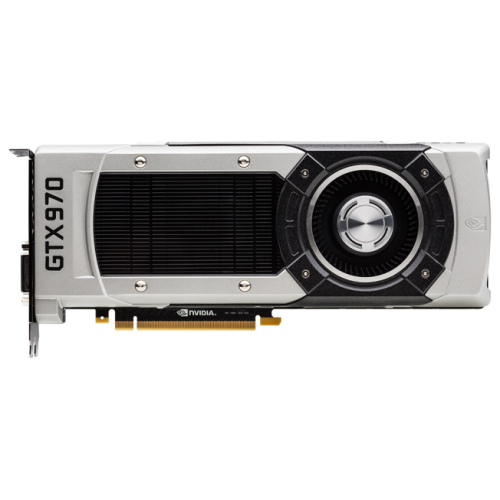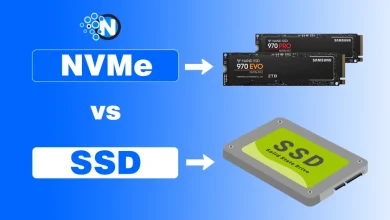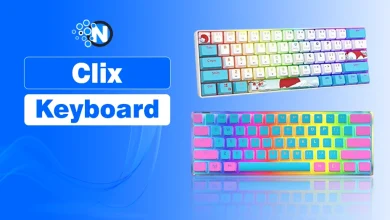NVIDIA GTX 970- Everything You Should Know

When it comes to gaming graphics cards, NVIDIA has long been synonymous with cutting-edge technology and high performance. The GTX 970 is a powerful graphics card that delivers the serene, rapid, and seamless gaming experience you crave across your beloved titles. With features like NVIDIA PhysX, GPU Boost 2.0, and NVIDIA TXAA, this graphics card will give you the best your games offer. With Nvidia’s GeForce Experience seamlessly integrated into its drivers, you can tap into Nvidia’s extensive testing spanning tens of thousands of hours to optimize your gaming settings effortlessly with just one click. This blog post will highlight everything you need to know about NVIDIA GTX 970 specs.
NVIDIA GTX 970 Features and Specs
The GeForce GTX 970 is an exceptional game-changer in the graphics card market, a rarity indeed. It resembles more of a cooked hand grenade strategically thrown into the high-end GPU market, aimed at causing maximum damage to the competition. However, in the process, it affects just as many Nvidia cards. Its exceptional performance per pound ratio makes it hard to argue for any other high-end GPU currently on the market. Below, we explore everything you need to know:
- Architecture and Performance
- Format Factor and Connectivity
- Power Efficiency and Cooling
- Scalable Link Interface
- Dynamic Super Resolution
- G-Sync
- Adaptive V-Sync
- GPU Boost 2.0
- 4K Resolution Display
- CUDA and 3D Vision Support
Architecture and Performance
The GTX 970 Graphics Card is designed for high-resolution gaming and graphics rendering. Its processing core operates between 1050 and 1178 MHz. With a chipset featuring 4GB of GDDR5 vRAM and 1664 CUDA GPU cores, it delivers exceptional performance. These cores are organized using NVIDIA’s Maxwell architecture, ensuring efficient operation. Programs requiring intensive graphics can leverage the parallel configuration of CUDA cores to accelerate render times and other parallel processing tasks. Additionally, the Maxwell architecture enhances energy efficiency, offering another advantage to users.

Format Factor and Connectivity
The output panel of the card includes four output ports: a DisplayPort 1.2 port, an HDMI 2.0 port, a dual-link DVI-D port, and a dual-link DVI-I port. The DVI-I port also supports VGA output with the provided DVI-I to VGA adapter. The HDMI and DisplayPort outputs can support resolutions up to 4096 x 2160. When paired with NVIDIA’s Surround technology, the resolution offers a captivating gaming experience across multiple monitors.
Power Efficiency and Cooling
The ACX 2.0 cooler from EVGA effectively maintains the card’s operating temperature at a low level while operating quietly. Its spacious cooling system enables the GPU to be overclocked beyond its standard specifications. To ensure minimal noise, the fans are powered by low-power motors and boast 11 carefully designed fan blades supported by double ball bearings, enhancing overall efficiency. This cooler is particularly advantageous in medium to large towers where internal airflow is not a significant concern.
Scalable Link Interface
When paired with a compatible motherboard and a connecting bracket, you can utilize NVIDIA’s Scalable Link Interface (SLI) to pool the processing power of up to four GPUs of identical models. The way these cards collaborate can be tailored to your liking. For instance, employing alternate frame rendering allows each alternate card to prepare the subsequent frame, amplifying the potential frame rate output beyond what a single card could achieve alone. Each card in this setup can enhance anti-aliasing by simultaneously processing an image alongside the other cards before smoothing out jagged edges.
Dynamic Super Resolution
NVIDIA introduced Dynamic Super Resolution alongside their Maxwell architecture. DSR leverages GPU architecture to maximize 4K capabilities even on lower screen resolutions. It achieves this by rendering graphics at 4K and smartly downsampling the output to fit smaller screens. This process effectively diminishes aliasing and jagged artifacts by applying a high-quality filter before scaling down the image.

G-Sync
When paired with a monitor equipped with G-Sync hardware, the monitor’s refresh rate synchronizes and locks with the output frame rate of the graphics card. This synchronization eliminates tearing and stuttering commonly experienced with fixed screen refresh rates, which is particularly crucial for gaming in stereoscopic 3D. Another advantage of G-Sync is decreased lag, enhancing gamers’ responsiveness to commands.
Adaptive V-Sync
NVIDIA’s Adaptive Vertical Sync reduces tearing and stuttering by continuously adjusting and monitoring the frame rate output of the graphics card. When the frame rate is high, Adaptive V-Sync moderates the output rate, preventing tearing caused by a mismatch with the monitor’s refresh rate. Conversely, when the frame rate drops, Adaptive V-Sync turns off to decrease stuttering.
GPU Boost 2.0
Increases the card’s clock speed dynamically according to the desired temperature. GPU Boost 2.0 elevates the clock speed to enhance performance when the card operates below the designated temperature. You have the flexibility to adjust the target temperature according to your preferences. This allows the card to operate quietly for everyday tasks and older games while maximizing performance during demanding high-resolution gaming sessions.
4K Resolution Display
Show graphics, videos, and games in Ultra High Definition (UHD) resolution (3840 x 2160) to provide finer details on 4K displays. Games optimized for 4K resolutions offer heightened realism with sharper visuals and fewer imperfections. Enjoy full-resolution 4K videos from platforms like Netflix and YouTube for an immersive media experience.
CUDA and 3D Vision Support
NVIDIA’s parallel computing platform leverages the parallel processing power of GPUs to enhance computing performance. Applications compatible with CUDA can offload demanding parallel tasks, like real-time video rendering, to the GPU, allowing the CPU to handle other tasks. It delivers full-HD resolution images to each eye when paired with a compatible 3D Vision monitor and active-shutter glasses. Moreover, with a 3D LightBoost-compatible screen, brightness remains consistent while wearing the glasses, and ghosting is minimized.
To Sum Up
NVIDIA started GeForce GTX 970 sales on 19 September 2014 at the price of $329. This desktop graphics card is based on Maxwell architecture and uses a 28 nm manufacturing process. With its Maxwell architecture, dynamic resolution scaling, advanced cooling system, and support for technologies like SLI, G-Sync, and CUDA, the GTX 970 offers gamers the power and versatility they need to tackle the latest titles easily. Whether delivering stunning 4K visuals or maximizing frame rates for smooth gameplay, the GTX 970 continues to impress with its blend of performance and innovation.




